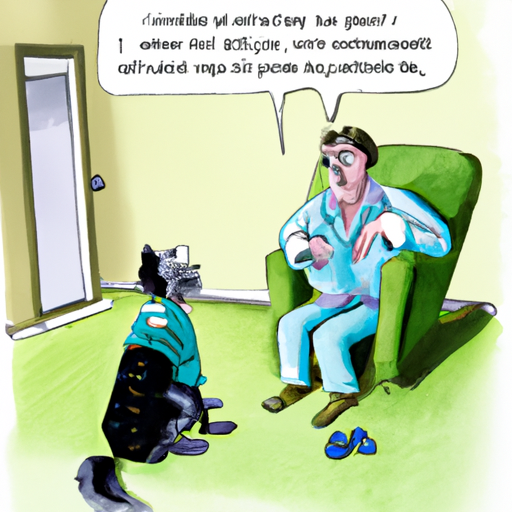If you are a dog owner, chances are you’ve experienced the stress of having your furry friend undergo surgery. One of the common concerns dog owners have post-surgery is the altered behavior their pet exhibits. This informative piece will guide you through how long dogs act weird after surgery, and what you can do to help them recover.
Understanding Why Dogs Act Weird After Surgery
Your dog’s strange behavior post-surgery is often due to the physical discomfort and the effects of anesthesia. Anesthesia can cause grogginess, confusion, and sometimes changes in personality temporarily.
-
Anesthesia effects: Dogs can experience various side effects from anesthesia like nausea, loss of balance, and incoordination. This can result in your dog appearing to act “weird” or out of sorts.
-
Physical discomfort: Pain or discomfort from the surgical site can also result in unusual behavior as your dog tries to cope with it.
Timeframe for Dogs Acting Weird After Surgery
On average, dogs can act weird anywhere from 12-48 hours after surgery. However, this timeframe is highly dependent on factors such as:
- The type and duration of the surgery
- The type of anesthesia used
- Your dog’s age, breed, and overall health conditions
Remember, every dog is unique and may recover at a different rate.
What Does Weird Behavior Look Like?
To help you identify what’s normal and what’s not, here are some common weird behaviors dogs might exhibit after surgery:
- Excessive drooling or panting
- Difficulty walking or standing
- Whining or crying
- Change in appetite or water consumption
- Aggression or fearfulness
How to Help Your Dog Recover
Your care and support can significantly enhance your dog’s recovery. Here are some ways you can help:
-
Provide a Comfortable Space: Ensure your dog has a quiet, comfortable place to rest. It should be easy for them to access and free from other pets or distractions.
-
Monitor Their Behavior: Keep a close eye on your dog’s behavior and physical state. Note any changes, and don’t hesitate to contact your vet if you have concerns.
-
Ensure Proper Nutrition: Your vet will likely provide dietary instructions. Follow these carefully as proper nutrition is crucial for recovery.
-
Administer Medication as Instructed: If your vet has prescribed any medications, ensure they are given as per the instructions.
| Do’s | Don’ts |
|---|---|
| Do give them their prescribed medication | Don’t force them to eat if they’re not ready |
| Do provide a quiet and comfortable space | Don’t allow them to jump or play roughly |
| Do monitor their behavior | Don’t ignore signs of discomfort or distress |
Spotting Serious Issues
While unusual behavior is expected, certain signs can indicate complications. Seek immediate vet care if your dog exhibits:
- Persistent vomiting or diarrhea
- Difficulty breathing
- Bleeding from the surgery site
- Extreme lethargy or unresponsiveness
Frequently Asked Questions
Q: How long will my dog be in pain after surgery?
A: This depends on the type of surgery and your dog’s overall health. Generally, most dogs will need pain medication for a few days to a couple of weeks.
Q: What if my dog won’t eat after surgery?
A: It’s normal for dogs to have a reduced appetite post-surgery. However, if your dog hasn’t eaten for more than 24 hours, consult your vet.
Q: Can I leave my dog alone after surgery?
A: Ideally, you should be with your dog as much as possible post-surgery. If you must leave, try to arrange for someone else to be with them.
Q: How can I comfort my dog after surgery?
A: Provide a quiet, comfortable space for your dog to rest. Speak to them in a calming voice and provide gentle strokes for comfort.
Remember, your dog’s unusual behavior after surgery is typically temporary. Your patience, care, and understanding during this time are crucial for their recovery. If you have any concerns, don’t hesitate to contact your vet. They’re there to help both you and your furry friend through this recovery process.



